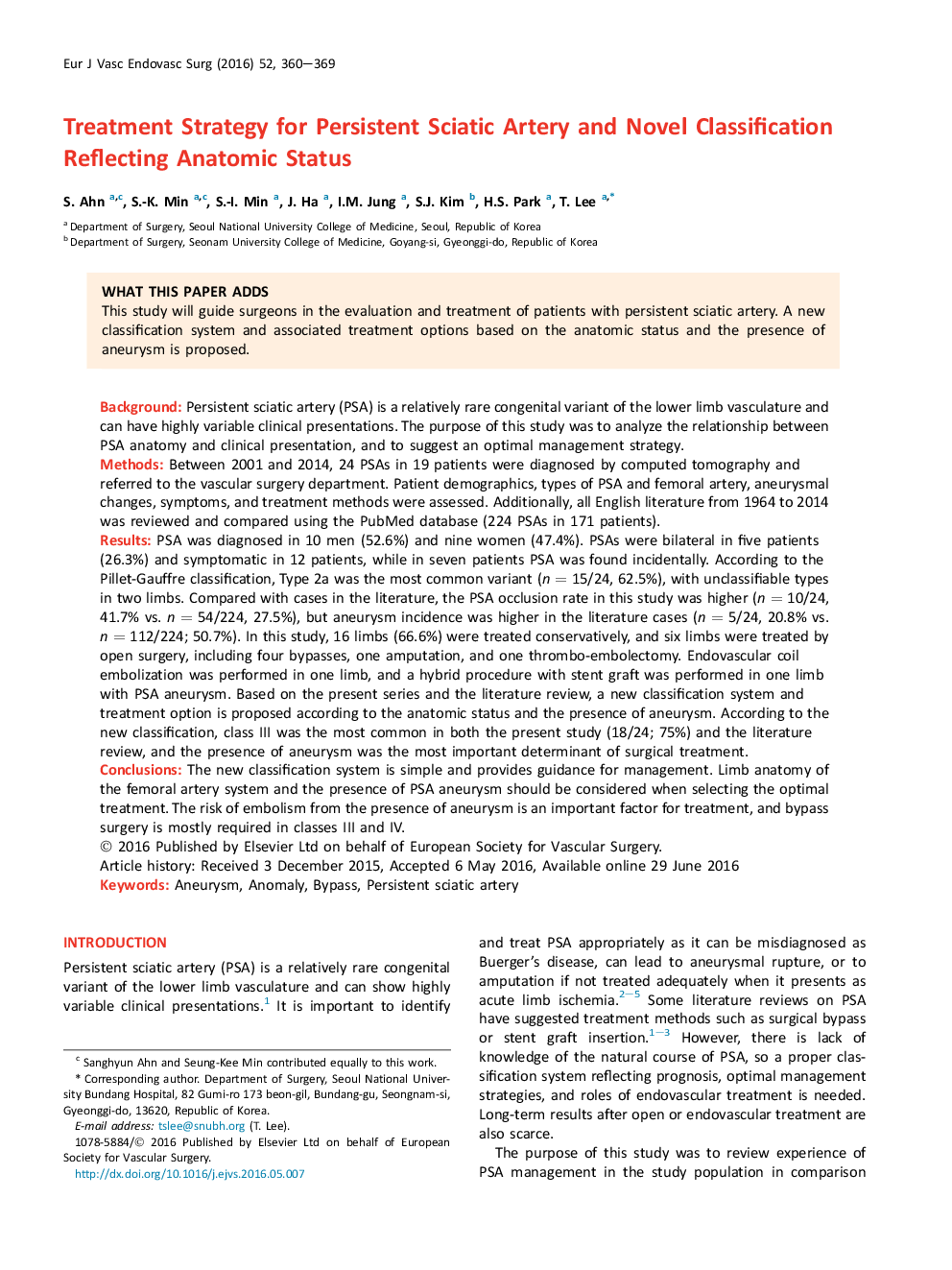| کد مقاله | کد نشریه | سال انتشار | مقاله انگلیسی | نسخه تمام متن |
|---|---|---|---|---|
| 2911557 | 1575426 | 2016 | 10 صفحه PDF | دانلود رایگان |
BackgroundPersistent sciatic artery (PSA) is a relatively rare congenital variant of the lower limb vasculature and can have highly variable clinical presentations. The purpose of this study was to analyze the relationship between PSA anatomy and clinical presentation, and to suggest an optimal management strategy.MethodsBetween 2001 and 2014, 24 PSAs in 19 patients were diagnosed by computed tomography and referred to the vascular surgery department. Patient demographics, types of PSA and femoral artery, aneurysmal changes, symptoms, and treatment methods were assessed. Additionally, all English literature from 1964 to 2014 was reviewed and compared using the PubMed database (224 PSAs in 171 patients).ResultsPSA was diagnosed in 10 men (52.6%) and nine women (47.4%). PSAs were bilateral in five patients (26.3%) and symptomatic in 12 patients, while in seven patients PSA was found incidentally. According to the Pillet-Gauffre classification, Type 2a was the most common variant (n = 15/24, 62.5%), with unclassifiable types in two limbs. Compared with cases in the literature, the PSA occlusion rate in this study was higher (n = 10/24, 41.7% vs. n = 54/224, 27.5%), but aneurysm incidence was higher in the literature cases (n = 5/24, 20.8% vs. n = 112/224; 50.7%). In this study, 16 limbs (66.6%) were treated conservatively, and six limbs were treated by open surgery, including four bypasses, one amputation, and one thrombo-embolectomy. Endovascular coil embolization was performed in one limb, and a hybrid procedure with stent graft was performed in one limb with PSA aneurysm. Based on the present series and the literature review, a new classification system and treatment option is proposed according to the anatomic status and the presence of aneurysm. According to the new classification, class III was the most common in both the present study (18/24; 75%) and the literature review, and the presence of aneurysm was the most important determinant of surgical treatment.ConclusionsThe new classification system is simple and provides guidance for management. Limb anatomy of the femoral artery system and the presence of PSA aneurysm should be considered when selecting the optimal treatment. The risk of embolism from the presence of aneurysm is an important factor for treatment, and bypass surgery is mostly required in classes III and IV.
Journal: European Journal of Vascular and Endovascular Surgery - Volume 52, Issue 3, September 2016, Pages 360–369
